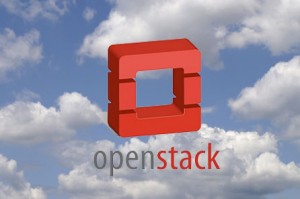 Rackspace and HP have each brought major portions of their cloud offerings based on the OpenStack code out of beta and into general availability today.
Rackspace and HP have each brought major portions of their cloud offerings based on the OpenStack code out of beta and into general availability today.
Backers of the open source project call the moves a milestone for OpenStack that affirms the progress it has made since it began in 2010, with Rackspace now spinning up the largest deployment of an OpenStack-powered cloud to date.
“This has been a big piece of work. It’s our biggest product to date and it represents us implementing technology that we’ve been developing within the OpenStack community for some time and making it available for real customer consumption,” says Rackspace CTO John Engates.
New from Rackspace are Cloud Servers powered by OpenStack, a compute platform to run Linux or Windows virtual machines, and Cloud Database, a MySQL database server.
HP, meanwhile, has made its OpenStack-based Object Storage and Content Delivery Network generally available. HP will be contributing the code it used to build the CDN back to the OpenStack community for integration into the project.
Gartner analyst Lydia Leong says the news from Rackspace and HP is a landmark for the open source project. “It’s the first time that anyone is running significant production workloads on OpenStack,” she says. “This is kind of the big test: Does this work in production?”
Rackspace and HP are convinced it does, after running their products in large-scale test modes for the past few months. Rackspace CTO Engates says features will be added to the company’s OpenStack-powered cloud services as the project’s code continues to mature. For example, block storage will be added, as well as virtual networking capabilities, which will give users greater flexibility to create and deploy virtual public or private networks through APIs and a newly designed Rackspace dashboard, which was also launched today. Rackspace will be introducing those components sometime this year, Engates says.
The broader OpenStack community is working on virtual networking functionality through a project named Quantum, which has been led largely by software-defined networking (SDN) company Nicira, which VMware recently purchased for $1.26 billion.
Even though Rackspace is rolling out new OpenStack-powered offerings, the company will continue to offer customers use of its legacy cloud computing and managed hosting system, which is not sourced from OpenStack. Engates says Rackspace will not push customers into transitioning to the OpenStack offering, but he hopes the new features will entice customers to move workloads to that system. Rackspace also hopes to soon give customers tools that will make migration to the OpenStack offering easier.
While Rackspace was an original founding member of the OpenStack project, HP joined the community last year. “Based on the feedback we’ve gotten, we hear there is a need for transparency and portability,” director of product management for HP Cloud Services Marc Padovani said about why HP chose to introduce an OpenStack-powered offering. “Customers don’t want to be locked in with a proprietary vendor.”
OpenStack backers have touted the interoperability and open source nature of the project as one of its chief benefits for not only service providers, but enterprise customers as well. Engates says having an open architecture allows customers to download the OpenStack code for free and deploy private clouds that mimic those from OpenStack providers, which could allow for easier creation of hybrid clouds. Having an ecosystem of OpenStack-based public clouds on the market gives customers choice to be able to move cloud services among various providers.
Rackspace and HP are the first major providers to have public cloud offerings based on OpenStack. Internap, another IaaS provider, has an OpenStack-supported offering, but it is on a smaller scale.
OpenStack is still far from being a “turnkey” solution for enterprises at this point, says Gartner’s Leong. She sees raw OpenStack code being more widely used by service providers than enterprises, but does also see plenty of room for companies such as Piston Cloud Computing that will take the OpenStack code and create business offerings.
Joshua McKenty, president and CEO of Piston, and one of the co-founders of the OpenStack project from his time at NASA, says he’s happy to see the advancements from Rackspace and HP, but he questions if the moves could have been made earlier. “It’s about time,” he says, noting that Rackspace has been working on implementing the OpenStack code since the project was founded.
Engates admits that he “probably would have liked it to have gone a little faster,” but he notes that the company wanted to make sure the offering was ready for consumers and had been tested appropriately. Plus, in addition to integrating the OpenStack compute platform into the company’s storage services, Rackspace has spent the past few years building up the OpenStack community, which now includes more than 180 companies and 3,300 developers.
Since then, however, the project has seen increased competition, particularly from Citrix, which created its own open source project named CloudStack after it defected from OpenStack. Open soruce project Eucalyptus is another competitor.





